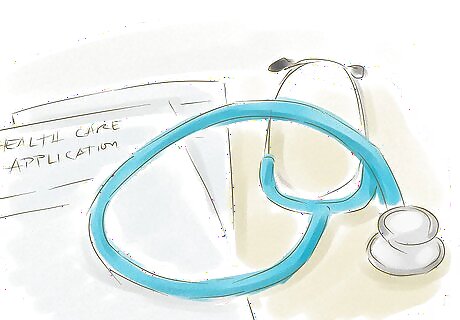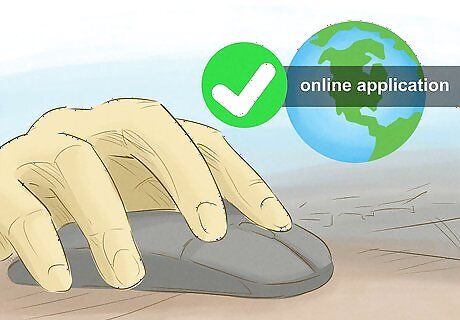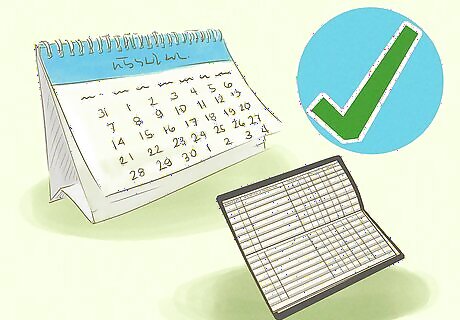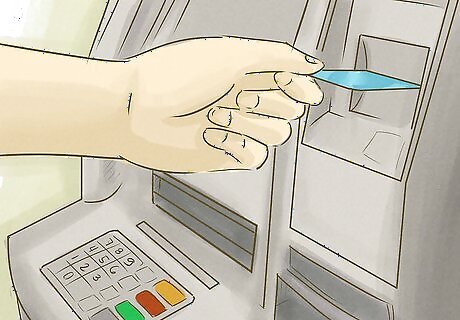
views
Finding the Right Health Savings Account

Enroll in a High-Deductible Health Plan. Before you can open an HSA, you must first be on a High-Deductible Health Plan. The HSA is meant to offset the costs of the high deductible, so that's why it's only available with this type of plan. Your plan should have this label on it. Plus, it will likely note that you can open an HSA with it. You can simply choose a High-Deductible Health Plan from your employer, or pick one when choosing health insurance from the marketplace exchange.

Pick an administrator. HSA accounts are typically administered through banks, though they can also be administered through credit unions, insurance companies, and brokers. You can simply open one up with your bank if that's your preference, and you usually don't need another account with the bank. However, you should check on a few things, such as maintenance fees and investment options. Maintenance fees can run anywhere from nothing to $5 USD or more per month. Also, ask if there are any other fees to pay. Your employer may choose your HSA administrator for you. Your health insurance company may also recommend a bank for an HSA fund.

Decide if you want to invest in mutual funds. One benefit of an HSA is you can use some of the money to invest in mutual funds once you reach a certain amount, usually $2,000 USD. Investing in mutual funds can help you earn more money over time. If you just keep it as cash, rather than investing, you'll only earn a small amount of interest. Check on investment options. Some banks will have mutual funds to choose from, but others may not have a way for you to invest the funds.
Setting up the Account

Find the application online. Most banks and other HSA administrators have an application online for you to fill out. If you prefer, you can go to the bank in person and ask for an application.

Fill out the application. Part of the process will be filling out biographical information on the application. You'll need information about your health insurance plan. If you want to withdraw money from a bank account for the HSA, you'll need your bank account numbers. You'll need to agree to the fact that you only have a high-deductible plan, and you're not covered by any other insurance. You'll need information like your address, Social Security number, and who you have your high-deductible plan with. You may also need information from your employer, such as a login, if you're going with an employer-chosen HSA. Usually, you'll need some form of ID.

Fund the account. If you set up an account with a bank, you can likely withdraw funds from your checking account. If you go in person, you may want to take a check just in case. Check to see if there is a minimum you must deposit, so you can be ready to deposit that amount. You should also be able to set up paycheck withdrawals with most HSAs. You'll need to talk with the employer about this option, as they must offer it as a benefit. Check with the bank you're using for your HSA to see if you can tie your current checking account with your HSA, even if you're not using the same bank that holds your checking account.
Contributing to HSAs

Find the yearly limit. You can only put in so much money each year, but the limit is adjusted yearly. Check the IRS website to find the limit for the current year. As of 2017, the limit for a single person is $3,400 USD, while the limit for a family is $6,750 USD.

Contribute as much as you want within the limit. Each year, you can put in as much money as you want, up to the limit. Generally, you'll be able to transfer from your account to the HSA, though in some cases, your HSA holder may give you forms to transfer money.

Don't worry about losing money. Unlike a Flexible Spending Account (FSA), your money rolls over each year in an HSA. You don't have to spend it or lose it like you do with an FSA. Plus, you can take it with you when you change employers. In addition, when you reach age 65, you can basically use it as a retirement fund. You can take out money for any reason.

Use your account like you would any bank account. While you must only use an HSA to pay for qualified expenses, you basically use it like any account. You'll get a debit card and checks, and you'll use those to pay for expenses.




















Comments
0 comment